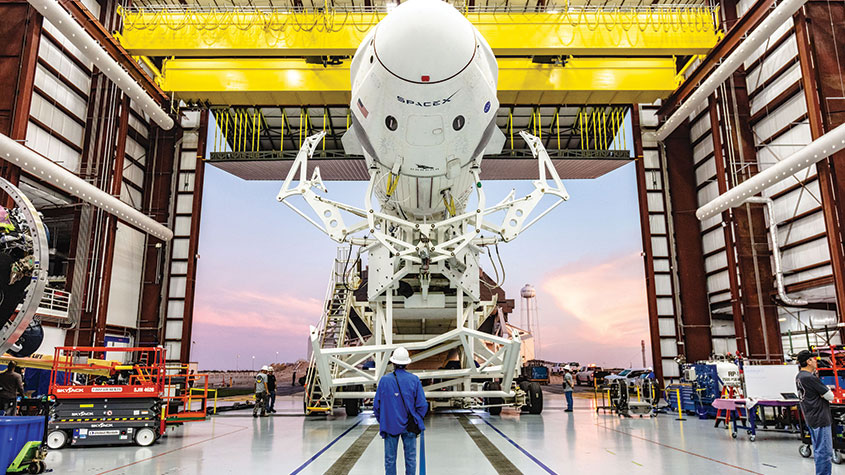Big Oil has lagged behind in the race to recovery – expect a spurt in 2014
Most analysts see little upside for the oil price – but they’re missing a trick. Antonia Oprita reveals the best ways smart investors should place their bets now.
Most analysts see little upside for the oil price but they're missing a trick. Smart investors should place their bets now, says Antonia Oprita.
As we enter 2014, investors are feeling upbeat on most assets: they reckon shares will keep rising, property is a good bet, and even bonds might not be that bad if central banks don't mess up too badly.
But there's at least one asset where you'll have a tough time finding someone making the bull case oil. Most analysts in the words of Morgan Stanley see "little upside for oil prices".
MoneyWeek
Subscribe to MoneyWeek today and get your first six magazine issues absolutely FREE

Sign up to Money Morning
Don't miss the latest investment and personal finances news, market analysis, plus money-saving tips with our free twice-daily newsletter
Don't miss the latest investment and personal finances news, market analysis, plus money-saving tips with our free twice-daily newsletter
On the demand side, global growth may be improving, but there's uncertainty over demand from China, not to mention Europe, as Capital Economics notes. The research group expects Brent crude prices now around $107 a barrel to drop to $90 by the end of 2014. But the bigger threat to prices comes from the supply side.
After a decade of growing fears about peak oil' that oil supplies have peaked the worry now is that there will be too much oil, with supply rising rapidly due to 'the shale revolution' in the US.
Indeed, the sharp drop in the US trade deficit for November, reported this week, was partly due to falling oil imports. There's also the potential for more oil to become available from various countries in the Middle East, thanks to an apparent easing of geopolitical tensions.
The general apathy towards the oil price has been reflected in the price of stocks in the sector. In what was a very good year for stock markets worldwide, few people could bring themselves to get excited about big oil.
In the US, shares in big energy firms returned about 15% over the past year, lagging the market (the S&P 500 is up around 28%). In Britain the FTSE All-Share Oil and Gas Producers sub-index, which includes oil majors such as BP and Royal Dutch Shell, is among the worst performers of the past year, rising by just 6%, compared to 18% for the All-Share as a whole.
That's the kind of underperformance that gets contrarian investors excited. When markets feel gloomy about prospects for a sector, particularly at a time when optimism is otherwise rife, it only takes a minor surprise on the upside to spark interest in the area again.
Prospects are better than you might think
The good news is that there are plenty of reasons why things could turn out better for the oil and energy sector in 2014 than anyone currently expects. For one, concerns about wobbly economic growth could well be exaggerated (for this year, at least). The US and the UK are widely considered to be on the path to strong recoveries.
But there are also signs of a slow but steady improvement in the eurozone. Perhaps the most encouraging bit of news from the single currency area in recent months was the drop in Spanish unemployment in December, the second-largest fall in 14 years and the fifth monthly drop in a row.
In China the other big worry for global growth things don't look so promising. Recent figures point to a slowdown in manufacturing, while growth in the services sector was at its weakest in two years in December.
There is also a lot of noise about reining in shadow banking.This, as analysts point out, would reduce the amount of credit available and lead to a further slowdown. But it's still too early to say how painful the Chinese authorities would allow any slump to become they are just as prone to printing money as any other government when they get worried about growth.
And given that China's economy spent most of last year with growth concerns hanging over it, its appetite for crude still seems healthy. Bloomberg reports that there are currently 80 tankers full of crude oil en route to China the highest number "in at least two years".
This suggests that demand for oil is higher than many believe. As Malcolm Graham-Wood, founding partner at Hydrocarbon Capital, remarked on CNBC recently: "there's a one-year waiting list for a decent car in China; it's like 15 years ago when we went from bicycles to motorbikes, and people don't understand that".
If China genuinely aims to have consumers rather than infrastructure as its main economic driving force, then oil demand may in fact continue to increase, even as demand for certain other commodities drops.
Even if China has a tough time in 2014, demand elsewhere is picking up. The International Energy Agency (IEA) last month noted projections of US demand had been revised higher, "reflecting recent upward adjustments to official delivery data and a revised estimate for economic growth" for the third quarter of 2013.
Oil demand looks set to rise in the US this year for the first time since 2010. The IEA also noted that "a protracted period of steep decline in European oil demand eased back" earlier in 2013 and in some cases "reversed".
As a result, the IEA expects global oil demand to increase to 92.4 million barrels a day (mb/d) in 2014, from 91.2 mb/d last year, and 90mb/d in 2012.
The supply glut
But what about the supply glut'? Well, so far, that doesn't seem to be forthcoming. At least, that's what Saudi Arabia's oil minister, Ali al-Naimi, implied at the last meeting of oil cartel Opec in December, when he dismissed the notion that his country might soon have to cut production.
Somewhat cryptically, he said that the market was "in the best situation it can be". In the third quarter of 2013, Saudi Arabia pumped around 10 mb/d the most since 1981, according to Diapason Commodities Management to make up for a shortfall in production from Libya and Nigeria.
The country remains the most important oil producer in the world. And it has a strong interest in trying to keep oil prices around current levels. In the wake of the Arab Spring uprisings, the Saudi government increased subsidies to the Saudi population effectively bribing them to stay on their best behaviour.
It is also helping other regimes in the region. That means the Saudis need a much higher oil price to balance the budget. They target a price of $100 a barrel for oil, "but $110 is OK too; $120 is too high, $90 is too low", according to Mike Wittner, head of global oil research at Socit Gnrale.
What could upset the oil barrel?
What could potentially threaten this? For Goldman Sachs, Libya is the main Opec supplier to watch this year. Protesters took control of ports in eastern Libya half a year ago, asking for more autonomy and a greater share of oil revenues, and have threatened to sell oil independently. But they are unlikely to find buyers willing to bypass the country's government.
In any case, "it would take a prolonged period of sustained stable production from western Libya before any meaningful supply would impact the global crude balance", said the investment bank in a recent report.
Another to watch is Iran, which reached an agreement on its nuclear programme with the West last year. While analysts don't expect rapid changes, some say the lifting of the sanctions could bring a rush of oil to the markets. Wittner notes that Iran has an estimated 37 million barrels of crude in storage "that could be sold immediately".
Once sanctions are lifted, it could take between three and nine months for output to return to normal. But if that happens, the Saudis are likely to cut production to offset Iranian exports and thus prop up the oil price.
What about the big new player, US shale oil? While shale has slashed natural gas prices in America, what is true for gas will not necessarily apply to crude. As Harold Hamm, CEO of shale oil giant Continental Resources, tells the FT, if the price drops to $70 a barrel, it would make production uneconomic, meaning supply would be cut until the price rises again. "Gas is everywhere; oil is somewhat harder to find," says Hamm. "Gas will flow through rocks a lot better; that's why you can produce it from the shales more easily."
Put more succinctly, as Angus Neill remarks on his Pinkers Post blog, the shale revolution doesn't mean "the end of Opec and the dawn of a new era of limitless supplies of hot chocolate".
He notes that oil majors such as Shell have "pulled out of shale projects due to higher than anticipated costs" and that "conventional oil exploration around the world is more active than ever".
A sweet spot for big oil
While it may not be obvious at first glance, the oil sector is in a sweet spot right now: many firms have invested heavily in the past and are now seeing these efforts bear fruit in the form of higher production. And while the name Big Oil' still sticks, many of the largest majors have diversified into other areas, such as natural gas so they are not left entirely hostage to oil price movements.
Then there's monetary policy. The Fed may have started to rein in quantitative easing (QE), but at the first sign of trouble, the central bank has left the door open to more money printing. Moreover, the Bank of Japan is in full QE mode and the European Central Bank has embarked on the easiest monetary policy in its short history and the chances are it will start overtly doing QE as soon as it can sneak it past the Germans.
In the longer run, central bankers risk inflation taking off if they leave it too long to tighten monetary policy and bitter experience suggests they will. All this would send investors back to commodities and oil as a store of value.
Of course, there are risks. The world economic recovery is fragile. The eurozone crisis could flare up again. We might still see a hard landing in China. But many of these risks are already in the price of oil, which has gained only about 3% in a year.
Those who believe it will reverse course may do well to heed Wittner's warning: "Don't bet against Ali al-Naimi and Saudi."
Will Arctic oil be put on ice?
Oil developments in the Arctic region, such as Gazprom's commercial exploitation of an oilfield, the first ever, have sparked fears among environmentalists, while exciting investors. But the region's attraction for oil firms may be exaggerated.
The Arctic may account for as much as 20% of the world's as yet undiscovered resources of oil and gas, according to Ernst & Young, but it's not easy to get at.
For a start, the region is shared by eight countries: Canada, Denmark (via Greenland), Finland, Iceland, Norway, Russia, Sweden and the US, and geopolitical tension is rising as the stakes are raised.
Then there's the fact that the harsh cold, periods of near-total darkness, and limited infrastructure, makes drilling there very difficult and expensive. Pricey equipment, such as special tankers and ice-breakers, is needed so the area is only suitable for big companies, with very deep pockets.
Even for these, it won't be plain-sailing. An accident could cause irreversible damage to the Arctic's ecosystem with BP's Gulf of Mexico disaster still fresh in most minds, Arctic drilling carries a reputational risk that few chief executives will be willing to ignore.
But perhaps more importantly, the region is facing growing competition from other parts of the globe that offer reserves that are easier and less dangerous to access. New estimates of resource potential in areas such as Africa are released almost every day so it is very possible that Arctic oil will remain under the ice for now.
Seven great plays on the oil price
Car sales in Britain jumped by more than 10% last year, making Britain Europe's second-largest market after Germany. It's all driven by cheap financing deals and an ageing fleet but you could see it as a good omen for UK oil majors. Of these, BP (LSE: BP) is the cheapest, with a price/earnings (p/e) ratio of just 6.4.
You could argue that this low ratio is justified in view of the company's struggles after the Gulf of Mexico oil spill. However, BP is finally coming out from under that cloud it has just won its first licence to drill in the waters off Greenland, three and a half years after abandoning previous attempts.
It pays an attractive yield of around 5%, and in November JP Morgan rated the stock overweight', saying its dividend growth could "easily outpace" that of its peers.
Attitude in the City towards BP's peer Royal Dutch Shell (LSE: RDSB) is distinctly lukewarm 12 out of 20 analysts covering it rank it as a hold', according to Bloomberg. But as my colleague Phil Oakley noted in MoneyWeek in October, the firm has low debt and a nicely covered dividend yield, which currently stands at around 5%.
It's also growing its exposure to gas projects, reducing its dependence on the oil price. Results are due later this month, but a stronger-than-expected rise in profit could trigger a rally, as modest forecasts are currently priced in.
A real underdog, and on the riskier end of the oil spectrum, is Tullow Oil (LSE: TLW), whose price has plunged by 32% over the past year after a run of bad luck exploration wells off French Guiana and Mozambique have so far failed to reveal oil or gas in commercial quantities, while one well in offshore Norway was abandoned. However, if the company can recover its winning streak, 2014 could be a great year to invest.
Outside the UK, French oil giant Total (Paris: FP) is promising. Strategists at Socit Gnrale like its "attractive valuation" and the fact that it has been selling various assets to raise cash last year the company sold a 15% stake in its Congo unit to a Qatari investment fund.
Total also has lots of exposure to gas. Indeed, David Stevenson of The Fleet Street Letter owns it as one of his favourite plays on the shale gas revolution. It looks reasonably cheap on a p/e ratio of 10.7, and a gross yield of 5.4%.
One global stock market that is both cheap and closely identified with the oil price is the Russian market. But rather than buy the whole market, you could simply invest in oil and gas producer Gazprom (LSE: OGZD).
The shares are down more than 5% in the past year and the p/e ratio stands at just 2.5. Yet the company beat its Western rivals late last year, when it became the first to produce oil in the Arctic commercially. It is also likely to come under growing pressure from the government to pay out more of its profits to shareholders.
Alken Asset Management, writing for Morningstar, suggest that could see the company's dividend yield as much as double from around 4.3% today.
To spread your risk, and invest in more overseas stocks, the Guinness Global Energy Fund is a good fund option. Valero Energy Corporation, Canadian Natural Resources Ltd, PetroChina, Chevron, ConocoPhillips and Statoil are all among its top ten stock holdings, which make up 34% of its portfolio in total.
The fund has returned 15.3% over one year, handily beating the overall equity-energy sector's return of 5.48%, according to data from Morningstar.
Alternatively, you could opt for an exchange-traded fund (ETF). We wouldn't bet on the oil price directly partly because of the complexities and risks of doing so, but mainly because we think the bigger opportunity lies in the relative weakness of Big Oil stocks.
Instead, you could opt for an ETF tracking the MSCI World Energy Index the top five constituents are Exxon Mobil, Chevron, BP, Royal Dutch Shell and Total. The Lyxor MSCI World Energy (LSE: NRGG) has a 0.4% a year annual charge.
Get the latest financial news, insights and expert analysis from our award-winning MoneyWeek team, to help you understand what really matters when it comes to your finances.
Antonia is a financial writer and editor with more than 15 years of experience in print, digital and broadcast media. She is currently a content editor for M&G Investments and previous to that she has worked for Reuters, CNBC, BusinessWeek, the BBC World Service and TheStreet.com's Real Money. Antonia has also done freelance writing for titles such as The Banker, Euromoney and MoneyWeek.
-
 ‘Why I have ditched my Help to Buy ISA for cash savings and the stock market’
‘Why I have ditched my Help to Buy ISA for cash savings and the stock market’Without the 25% bonus, my Help to Buy ISA is effectively redundant, says MoneyWeek writer Sam Walker.
-
 Is your inheritance tax allowance cut if you sell to downsize or sell your home to pay for care?
Is your inheritance tax allowance cut if you sell to downsize or sell your home to pay for care?Downsizing relief is a little-known benefit that could save your loved ones tens of thousands of pounds in inheritance tax after you’ve died.
-
 Invest in space: the final frontier for investors
Invest in space: the final frontier for investorsCover Story Matthew Partridge takes a look at how to invest in space, and explores the top stocks to buy to build exposure to this rapidly expanding sector.
-
 Invest in Brazil as the country gets set for growth
Invest in Brazil as the country gets set for growthCover Story It’s time to invest in Brazil as the economic powerhouse looks set to profit from the two key trends of the next 20 years: the global energy transition and population growth, says James McKeigue.
-
 5 of the world’s best stocks
5 of the world’s best stocksCover Story Here are five of the world’s best stocks according to Rupert Hargreaves. He believes all of these businesses have unique advantages that will help them grow.
-
 The best British tech stocks from a thriving sector
The best British tech stocks from a thriving sectorCover Story Move over, Silicon Valley. Over the past two decades the UK has become one of the main global hubs for tech start-ups. Matthew Partridge explains why, and highlights the most promising investments.
-
 Could gold be the basis for a new global currency?
Could gold be the basis for a new global currency?Cover Story Gold has always been the most reliable form of money. Now collaboration between China and Russia could lead to a new gold-backed means of exchange – giving prices a big boost, says Dominic Frisby
-
 How to invest in videogames – a Great British success story
How to invest in videogames – a Great British success storyCover Story The pandemic gave the videogame sector a big boost, and that strong growth will endure. Bruce Packard provides an overview of the global outlook and assesses the four key UK-listed gaming firms.
-
 How to invest in smart factories as the “fourth industrial revolution” arrives
How to invest in smart factories as the “fourth industrial revolution” arrivesCover Story Exciting new technologies and trends are coming together to change the face of manufacturing. Matthew Partridge looks at the companies that will drive the fourth industrial revolution.
-
 Why now is a good time to buy diamond miners
Why now is a good time to buy diamond minersCover Story Demand for the gems is set to outstrip supply, making it a good time to buy miners, says David J. Stevenson.